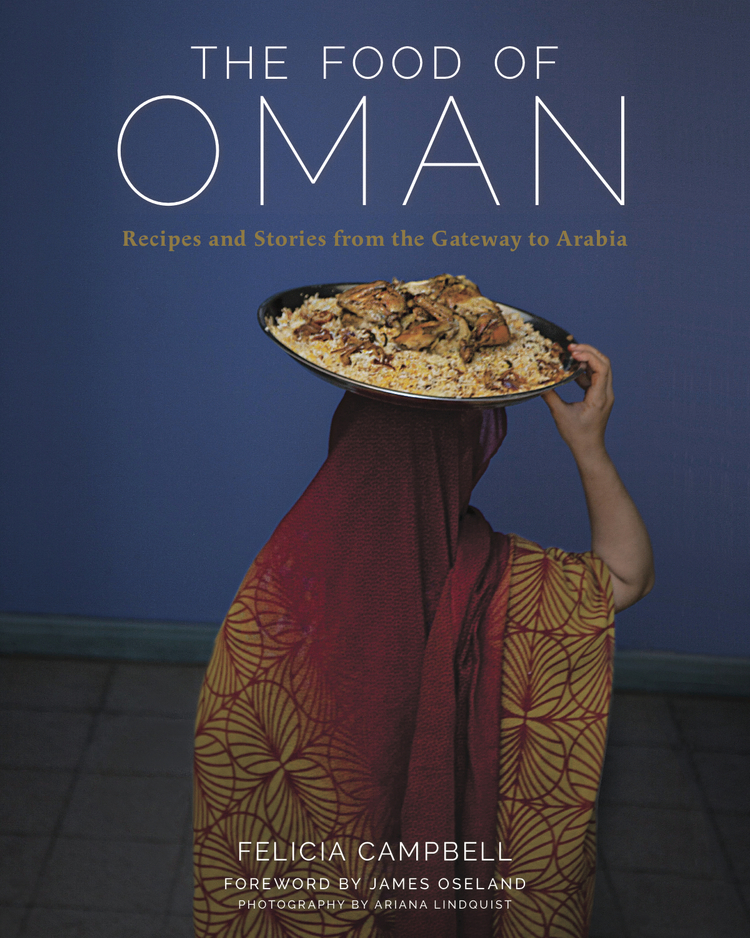
The Food of Oman: Recipes and Stories from the Gateway to Arabia
Robert Arndt
Felicia Campbell
2016, Andrews McMeel, 978-1-44946-082-2, $40 hb.
This is a well-informed and beautifully photographed love letter to a country and a cuisine that should lure many of its readers into joining the love-fest, either in their own western kitchens—techniques and measurements are adapted—or, even better, in Omani restaurants and homes. Campbell made her initial culinary connection with the Middle East as a 17-year-old US Army private, went on to a master’s degree and an award-winning career in food writing, and now lives permanently in Muscat. Thus she has all the riches of this multicultural cuisine available to her—the original dishes from or influenced by the Gulf, Iran, the desert, the mountains, the cliff coast, East Africa, Zanzibar and even Madagascar, as well as the many fusions they have brought forth, and also the new dishes that modern life has made possible: She includes a recipe from the back of an Omani vegetable-oil bottle—novel, but with traditional ingredients—that makes “one of the tastiest stews I’ve ever eaten.” Campbell paints Oman as a most welcoming and delicious place.
You may also be interested in...

Nomadic Chieftain’s Biography Unveils Dynamics of Colonial Expansion
Historian Tetsu Akiyama challenges the narrative that the Kyrgyz were a “static and monotonous ‘traditional’ society’” destined to be subsumed.
Noorjahan Bose: A Life of Learning
Taking inspiration from her now-deceased mother, Noorjahan Bose, a daughter of the Agunmukha, Bangladesh, now shifts her energy toward empowering other daughters.
British Museum Curator Takes Readers on Journey Spanning 6,000 Years
Southeast Asia curator Alexandra Green takes readers on a journey spanning 6,000 years, highlighting objects from Neolithic stone tools to contemporary paintings.